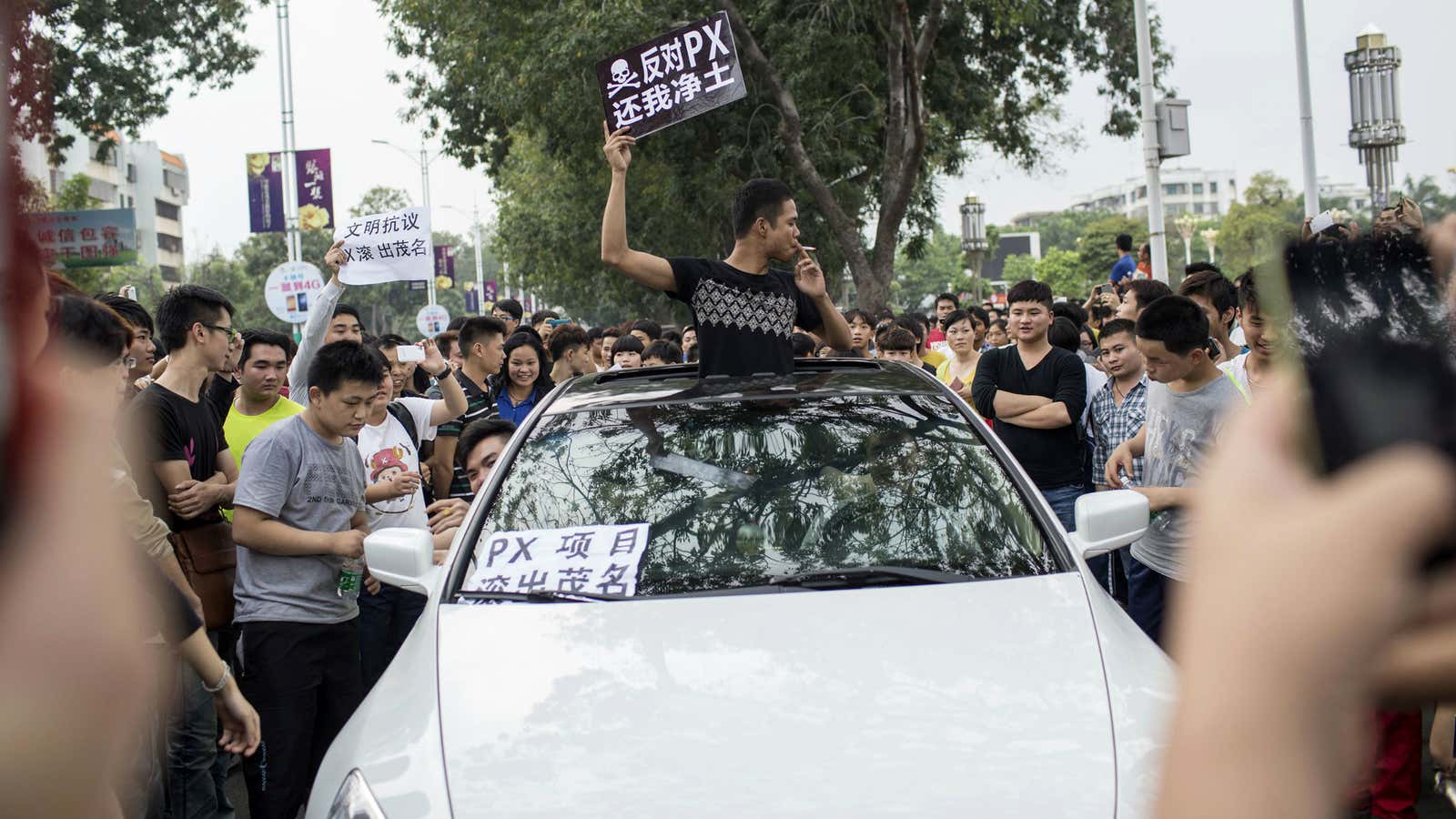China tightly censored discussion about recent protests in the southern city of Maoming, scrubbing almost everything but officially-sanctioned information from search results and social media in recent days. The government’s restrictive grip on information about the protests—which were started March 30 by citizens opposed to the construction of a chemical plant—appears to have backfired, spreading concern about the situation instead.
Some of the photographs shared on social media that purport to be about the citizens’ protests have been shocking—like this picture of a very young man lying on his side in a pool of blood, being cradled by a friend, or this picture of tanks rolling though the city at night, or this picture of thousands of protestors amassing.
All of those images were removed from Sina Weibo and internet searches, but not before they quickly spread far and wide. Some of these were also almost certainly fake—in that they show events that took place long before the Maoming protests:
- According to Google’s reverse image search (something not available in China), the photo of the bloody young man actually dates back to at least December of 2013, when it was posted with a story about a death in a Myanmar night club
- Google also suggests that the photo of the huge crowds amassing is from China’s anti-Japan protests in 2012
- Chinese daily newspapers claimed that the pictures of tanks that circulated were years old, and taken during training exercises.
Disinformation spreads on the internet incredibly quickly no matter what country you’re in. When a hurricane hit New York in 2012, for example, a Twitter user maliciously spread false information about the storm. But when the internet is uncensored, it tends to self-correct the worst hoaxes, as users fact-check viral content and call out the most egregious fakes.
Not so in China. Instead word of the Maoming protests, and the government’s allegedly brutal crackdown on them and obvious censorship of discussions about them, helped to spark other protests in nearby Guangzhou on April 1. There protestors carried banners that said “Who gave [the government] the right to beat people,” while online, citizens raged at the censorship (before their comments were quickly deleted).
An article in China’s People’s Daily on April 3 blamed foreign media for the problem, saying they did not do any on-site verification of the facts, a comment probably aimed at a Hong Kong newspaper.
Even the Maoming local government, though, seemed to admit that the situation was badly handled—in a broadcast about a press conference posted on Sina Weibo on the afternoon of April 3, officials reiterated that no one was killed, then “sincerely apologized” for their shortcomings, and promised to listen to the public’s views on the chemical plant. By early evening, the broadcast had more than 19,000 comments.
